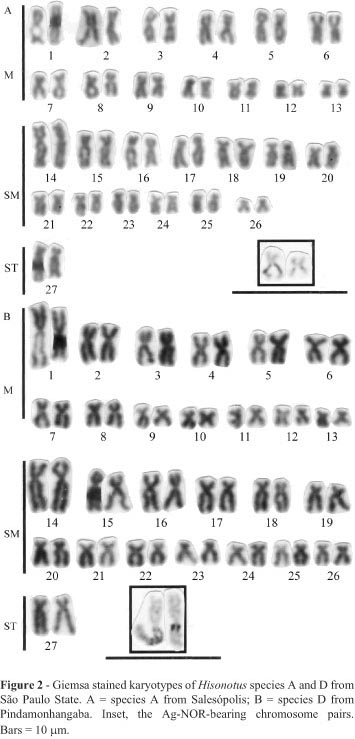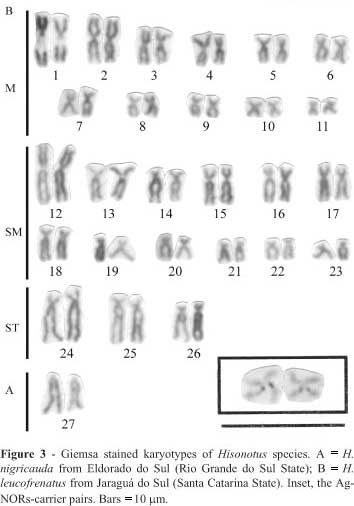The karyotypes of four Hisonotus species (two provisionally-named species A and D, H. nigricauda, and H. leucofrenatus) were found to have the same diploid number of 2n = 54 and interstitial silver-staining nucleolus organizer regions (Ag-NORs) located on the long arm of the largest metacentric pair. The C-banding pattern appeared to be species-specific, with one group (H. nigricauda and the unnamed species A and D) being characterized by small amounts of positive C-banded segments and containing a sub-group (species A and D) identified by a large positive C-banded segment on a small metacentric chromosome pair. The second group contained different samples of H. leucofrenatus, characterized by a larger amount of C-band positive segments spread over several chromosome arms. Heterochromatin appears to play an important evolutionary role in chromosome differentiation in Hisonotus species, especially in H. leucofrenatus. The geographic isolation of several H. leucofrenatus populations seems to have favored chromosome evolution of each sample analyzed.
fish cytogenetics; karyotypes; Ag-NORs; C-band; chromosome evolution







